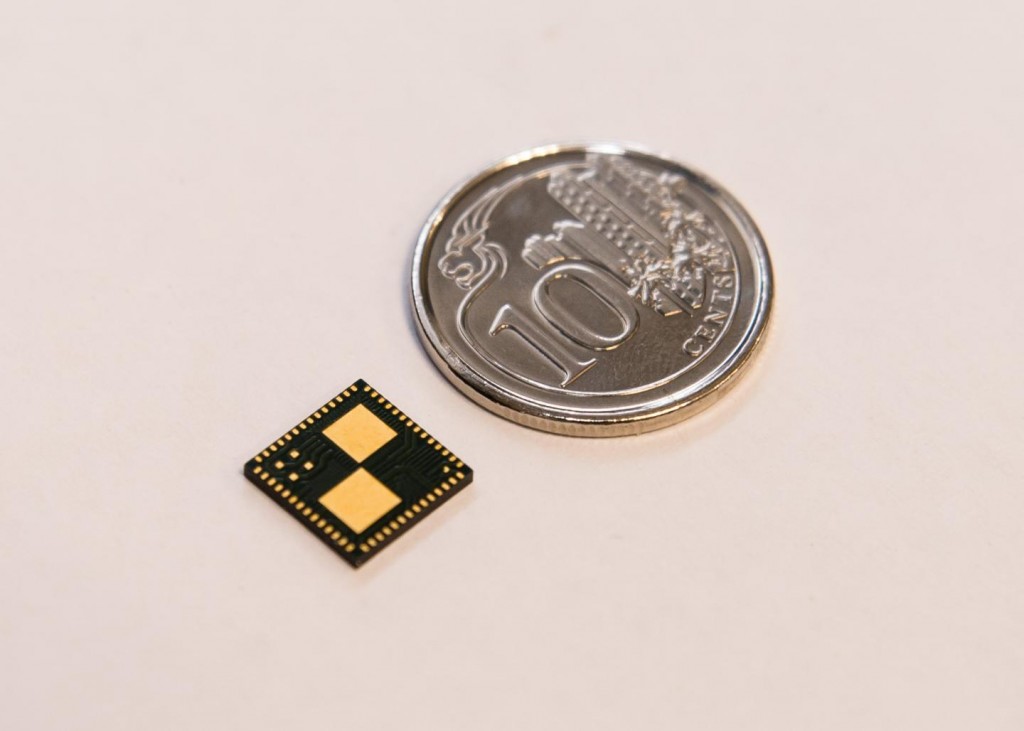
Scientists from Nanyang Technological University (NTU Singapore) have developed a smart chip which can tell you how healthy is your battery and if it is safe for use. If the battery in your smartphone or electric vehicle is faulty and is at risk of catching fire, this smart chip will warn you. Current warning systems only alert users when the battery is already overheating which may be too late for any remedial action.
Developed by Professor Rachid Yazami of the Energy Research Institute @ NTU, this smart chip is small enough to be embedded in almost all batteries, from the small batteries in mobile devices to the huge power packs found in electric vehicles and advanced aeroplanes.
A pioneer in battery research, Prof Yazami won the 2014 Draper Prize for Engineering awarded by the Washington-based National Academy of Engineering for being one of the three founders of lithium-ion battery. The prestigious award recognized his discovery in the 1980s in making lithium-ion batteries safely rechargeable, paving the way for its universal use today.
“Although the risk of a battery failing and catching fire is very low, with the billions of lithium-ion batteries being produced yearly, even a one-in-a-million chance would mean over a thousand failures,” said Prof Yazami, who holds more than 50 patents and has authored more than 200 scientific papers, book chapters and reports on batteries.

“This poses a serious risk for electric vehicles and even in advanced aeroplanes as usually big battery packs have hundreds of cells or more bundled together to power the vehicle or aircraft. If there is a chemical fire caused by a single failed battery, it could cause fires in nearby batteries, leading to an explosion.”
Embedded in the smart chip is a proprietary algorithm developed by Prof Yazami that is based on electrochemical thermodynamics measurements (ETM technology).
Current lithium-ion batteries have a chip in them which only shows voltage and temperature readings. Today’s battery chips are unable to detect symptoms of a malfunction and can also show only the estimated amount of charge the battery is holding.
In comparison, Prof Yazami’s patented algorithm is able to analyse both the state of health and the state of charge through a 3-dimensional chart. On a monitor screen, it looks similar to a ski route down a mountain.
Drawing on the analogy of a fingerprint, he said, “The ‘ski route’ of a brand new battery looks different from those of a degraded or faulty battery – just like how two fingerprints will look quite different.”
“In addition to knowing the degradation of batteries, our technology can also tell the exact state of charge of the battery, and thus optimize the charging so the battery can be maintained in its best condition while being charged faster,” added Prof Yazami, the Director of Battery Programmes at ERI@N.
“My vision for the future is that every battery will have this chip, which will in turn reduce the risk of battery fires in electronic devices and electric vehicles while extending their life span.”
The smart chip took Prof Yazami more than five years to develop and is now marketed by his start-up, KVI Pte Ltd. Working together with Prof Yazami on developing the smart chip platform at ERIAN is research scientist Mr Sohaib El Outmani.
KVI is now being incubated by NTU’s commercialisation arm, NTUitive. KVI is developing this chip into a series of products, which include battery packs for recharging mobile devices, charge gauge for electric vehicles, and a smart chip for every battery.
The start-up company has an exclusive license on Prof Yazami’s ETM technology which is based on his research done in NTU Singapore, California Institute of Technology (Caltech) and French National Centre for Scientific Research (CNRS).
His research incorporates two other unique factors: entropy, a measure of disorder or randomness of a system, and enthalpy, which is the sum of internal energy of a system.
It is expected that the technology will be made available for licensing by chipmakers and battery manufacturers before the end of 2016.







